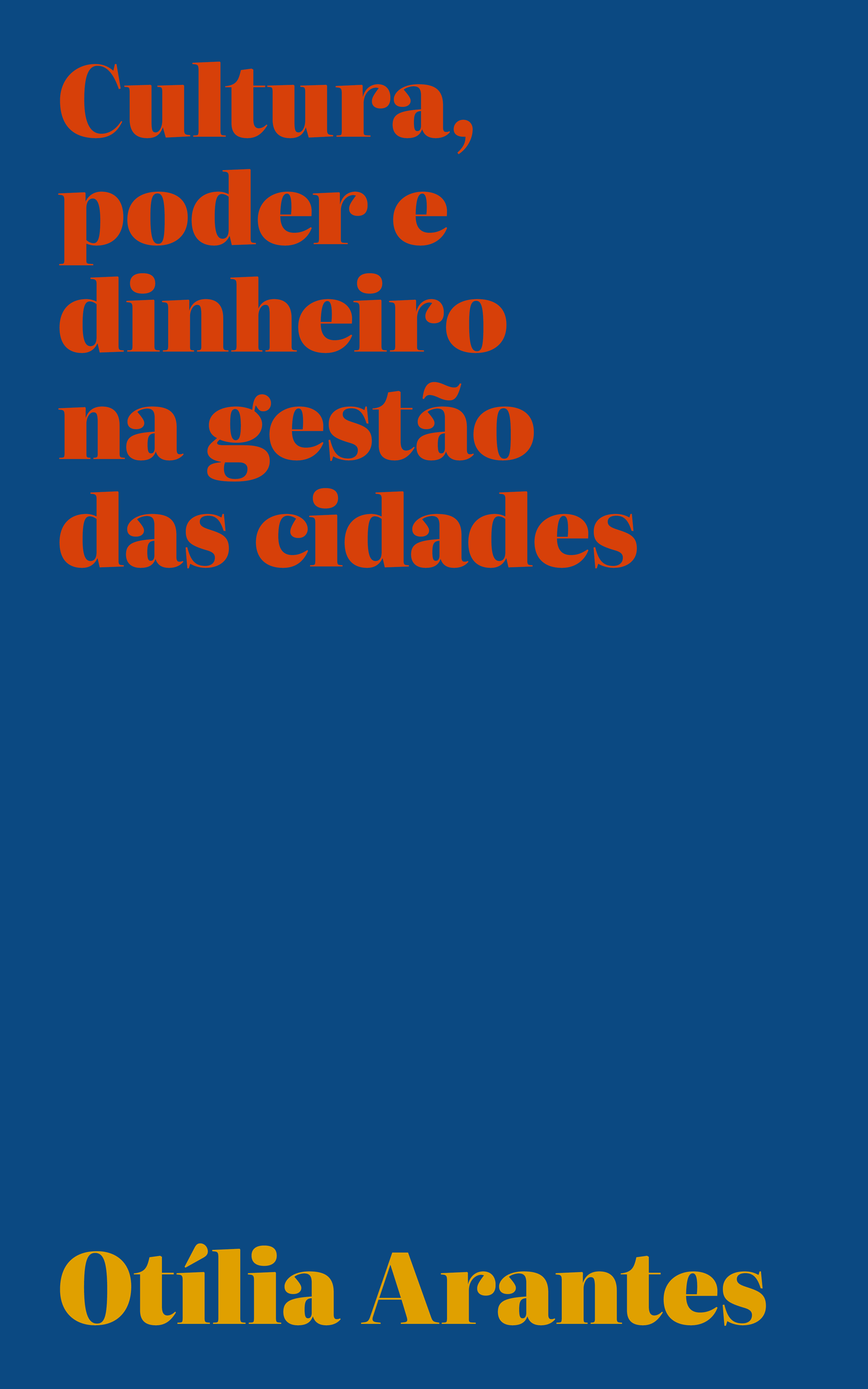Culture, Power and Money in City Management
2000
Synopsis
This volume contains three texts/syntheses of different writings and presentations by Otília Arantes in the 1990s about concepts and strategies for city intervention that aimed to ‘regenerate’ cities as places ‘animated’ by the reactivation of their historic and symbolic value—that is, their ‘cultural side’. A ‘back to the city’ program that emerged after the Modern Movement to restore a public life that had been denied to citizens by the regulatory plans of the functional city. This is the main topic of the first essay, “A ideologia do lugar público na arquitetura contemporânea” (The public place ideology in contemporary architecture), where the author presents an overview of the theories that dominated the debate about cities in the second half of the twentieth century, which were driven, since the post-war period, by the desire to restore the urban fabric. The author addresses Camillo Sitte’s lessons against the “agoraphobia” of modern architects and urban planners, the defense of monuments, and the CIAM—especially the 1954 work about the cuore of the city—, as well as the exemplary restoration of Bologna and the different contextualisms (including critical regionalism)—to which she gives some credit, in line with Frampton’s optimism, just to subsequently raise questions about them in the second essay. In “Cultura da cidade, animação sem frase” (City culture, phraseless animation), essays on the ‘rediscovered city’ and related projects are scrutinized to show that such a reversal, employing a very up-to-date apparatus derived from post-structuralism, especially the deconstructionist theories, could barely hide an aestheticizing coexistence with more extreme forms of alienation, where everything should obey the key principle of “flexibilization”. The result was the primacy of design—from the urban layout to microspaces—and the corresponding type of symbolic representation. The emphasis was no longer predominantly technical (as it was in the previous period), resorting to the vast passe-partout realm of the ‘cultural’. When cities are seen as repertoires of symbols, everything is culture. In a world that is also dominated by the market, culture and money go hand in hand. Simultaneously, the induced process of ‘gentrification’ would gradually become closer to what the old identity ‘propagandists’ (mentioned in the previous essay) would call transculturalism, translocalism, nomadism, miscegenation, etc. Culture has become central in advanced capitalism, as Fredric Jameson emphasizes, with the paradoxical overlap between two instances that should typically be antagonistic. This is analyzed in the last essay, “Uma estratégia fatal, a cultura nas novas gestões urbanas” (A fatal strategy, culture in new urban managements). An apparent contradiction, as expressed by the title, indicating that culture is not reversing a detrimental process, but the opposite: culture is reinforcing it. At that stage (especially in the 1990s), planning made a comeback, now with a strategic focus to include cities in the global circuit of big businesses, which further aggravated the cultural bloat that prevailed since statesmen and investors started to break a new frontier of power and capital accumulation: the image business. The idea that ‘everything is culture’, from an era that seems to have started in the 1960s, would turn into what we may call MARKET CULTURALISM, with the (perhaps involuntary) convergence of two urban generations that until then considered themselves as opposites, the contextualists and the entrepreneurs, and an assimilation so complete that we could no longer distinguish between dissidents and adherents.
Keywords: Public area, squares, monuments, Place Theory, Contextualism, territory, Critical Regionalism, Benjamin, Simmel, Camillo Sitte, Cacciari, Cregotti, Rossi, Tendenza group, back to the city, gentrification, museums, Fredric Jameson, Post-structuralism, Deconstruction, Eisenman, Purini, Triennale di Milano, strategic planning, Market Culturalism, Cultural Turn, Paris, Barcelona, Bilbao, Lisbon, Berlin.

Series
Categories
License

This work is licensed under a Creative Commons Attribution-NonCommercial-NoDerivatives 4.0 International License.


